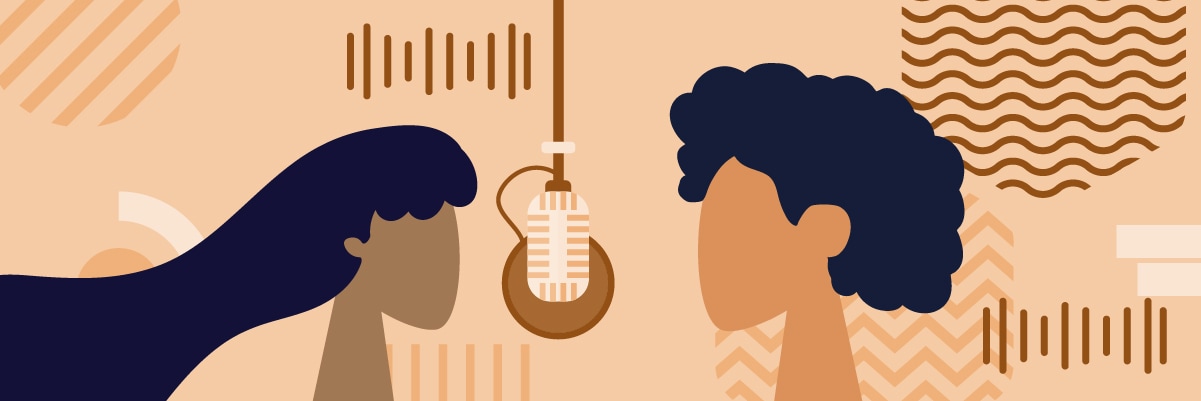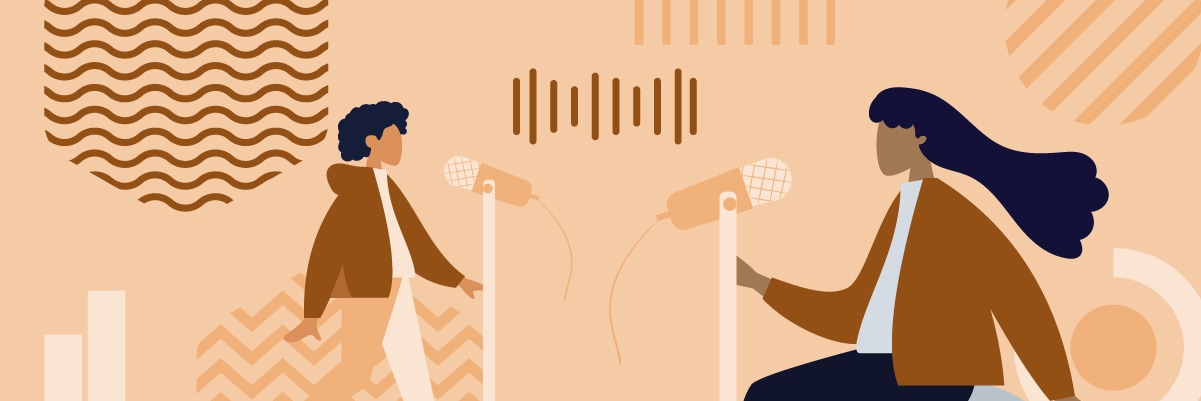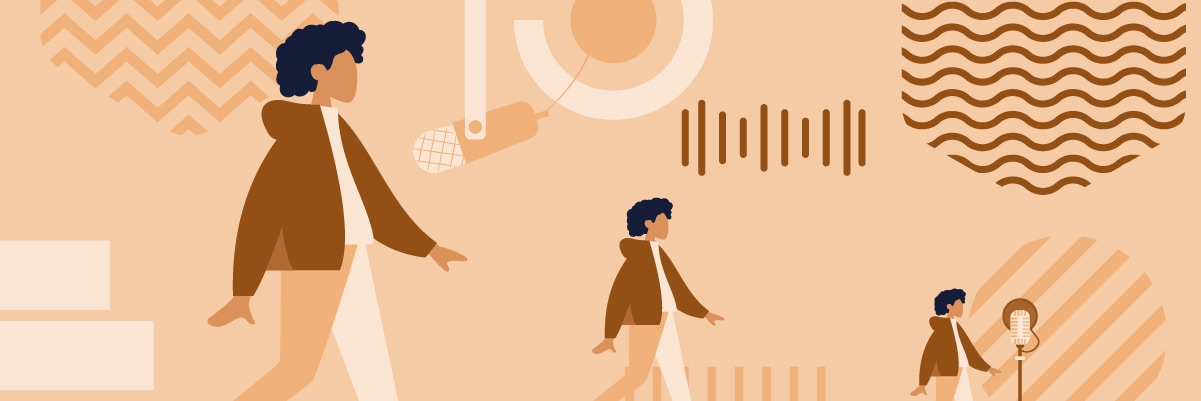Aaaah, it’s been a while since we talked about dubbing at Bunny Studio! But, there’s a reason why great voice artists are pretty much our bread and butter. In fact, over 100,000 talented voice pros currently call Bunny Studio their home, and that’s no joke. If you want to hear all about how to become a dubbing artist, you’re definitely in the right place.
And hey, don’t knock it until you’ve tried it! Being a voice artist may seem like pie in the sky, but it’s actually very achievable. Moreover, it’s definitely profitable, being one of the top-earning work-from-home professions right now. If you’re interested in knowing how to put that silky-smooth voice to good use, I’ve got a few tips that’ll help you get started.
Once you’re done with this article, you’ll know:
- What dubbing is — and what it isn’t.
- What you need to get started with your own freelance dubbing career.
- How much you can expect to make in a year.
- And, most importantly, where to find good-quality work.
Let’s take it from the top!
So, er, What Was Dubbing, Anyway?
With that pesky pandemic going on and everything, you’ve probably gotten pretty good at binge-watching TV shows, right? And, if you’re anything like me, you’ve probably gained a bit of an appetite for foreign shows. With great European TV shows like Money Heist and Dark, who can blame you?
But, if you’re like the millions of Americans out there, you probably haven’t been watching these shows subbed. Without even noticing, you’ve gone for the English-language option. Dubbing has become so culturally ingrained that we hardly even notice it, but there it is.
Dubbing is, then, a complete replacement of the original vocal track with one in the target language. The intention is to create the seamless illusion that the characters are speaking in the audience’s language.
Of course, there’s a lot more to learning how to become a dubbing artist than just speaking a language. Dubbing is a part of the larger world of voice-overs. Thus, dubbing is a form of voice-over, but with emotion and — hopefully — great acting that stays faithful to the original product.
More on Dubbing
In our article “Voice-over vs. Dubbing – The Complete Guide,” Rita writes:
Voice-over and dubbing are both techniques for interpreting a message to a new audience. However, while voice-over is narrative by nature and lacks the emotion and tonality of the original audio, dubbing is much more precise as it maintains the tonal, emotive, and technical richness of the original soundtrack.
(…) When translating audio, dubbing attempts to hide the evidence of this translation so that foreign content appears native to the target audience. Dubbing is also called Language Replacement, and it creates the illusion that the actors on screen speak the native tongue of the viewers. Well-dubbed audio takes expertise, sounds natural, and the result is unnoticeable to the viewer.
So, of course, dubbing requires a person to be great at voice acting. That can definitely sound scary, but it’s definitely doable if you’ve got a knack for it. And, what’s more, it seems that people prefer it to the original thing, apparently!

It’s Popular!
Netflix has been touting the popularity of dubs for a while. In what the Hollywood Reporter called a “global dubbing revolution“, Netflix execs gave the following info:
- Dubbed versions of hit shows are way more popular than the subbed ones.
- On average, dubbed content has been going up by over 120% per year.
- They currently employ over 125 facilities worldwide just for dubbing!
- It now dubs in a whopping 31 languages, up from 24 a few years ago.
And it’s not that Netflix’s bucking the trend, exactly. Other streaming platforms are getting with the program. With the reach of services like HBO Max and Amazon Prime, clients of all languages want content in their native language and fast. Learning how to become a dubbing artist means gaining access to one of the fastest-growing markets right now.
Let’s take a look at what you need, and how you can get started.
How to Become a Dubbing Artist — The Basics
Now, this is the point where you may be getting a slight case of vertigo. Understandable, considering that you may be hesitant about whether you’ve got the goods or not. After all, it’s one thing to imitate famous movie characters in your Twitch streams, and another entirely to think about making a career out of it.
But, if you’re already talented with acting and impressions, there’s no real downside to giving it a go. And you don’t have to deliver Oscar-worthy turns at first, either. While there’s plenty of dubbing work for films, animated shorts, or TV shows, there are many other productions that use dubs. Let’s take a look at just some of the most common where you could ply your trade:
- Movies
- TV shows
- Animation (cartoons, anime, etc.)
- Web Content
- Social Media content
- YouTube videos
- Explainer Videos
- Corporate Media
And that’s just me getting warmed up! Truth be told, you don’t need to be Daniel Day-Lewis to learn how to be a dubbing artist. But, there’s one thing that you do need, so listen up, and listen well:
Buy a darn good microphone.
Rock the Mic
In “The Most Important Voice Over Tool: The Microphone,” James wrote:
Your microphone is the connection between you and what your clients hear. It captures your voice and allows for the transmission of your voice for voice-over purposes.
When it comes to your work arsenal, nothing is more important than a microphone. This dedicated tool is one of the non-negotiables in your field since the quality of your work depends on it. Unfortunately, choosing the ideal voice-over tool for your home set up can be daunting, especially for beginners.
And this is triply-so for dubbing. When you buy a mic, you should take into consideration:
The Type
Mics come in a variety of pickup patterns (the way they “perceive” sound) and types, like condenser, and dynamic. While you can definitely check out our article about it, I’d say to try out a mid-range microphone first and then work your way up. When you’re learning how to become a dubbing artist, it’s best to take it easy. Baby steps.
Dynamic mics are best for artists who perform onstage. They don’t have as much sensitivity as you need, so stick with condenser mics, which pick up the nuances of your voice much better. Also, make that your mic has an omnidirectional pick-up pattern or cardioid. The Blue Yeti is a perfectly serviceable USB mic that’s chosen every year by millions of YouTubers and aspiring voice artists. It’s a side-address microphone, which means you speak perpendicularly into the mic.
The Price
Again, this is where the Blue Yeti wins out over its competitors. At nearly $100, it’s a great choice if you’re looking to get started without making a huge dent in your economy. But, consider its very high price-quality ratio, the risk is very low while the reward is very high.
Some Other Considerations
You should always be mindful to record in a quiet space. Dubbing is a hard business, and you wouldn’t want your final audio to have “oohs,” “aahs,” or other extraneous sounds. You’ll probably have to get acquainted with programs like Audacity at first. And, it wouldn’t be out of the question to have to set up your very own home studio to get going. But, as long as you’re in an environment that’s quiet and with solid acoustics, you may be able to forego this step at first.
It goes without saying, though, that sometimes you’ll have to do dubbing work in-person. This means, essentially, that you’ll have an audio engineer going your every word, thus keeping you from having to do all that extra work yourself. But, at first, at least, it’s very likely that you’ll have to be a recording artist and audio editor all in one, especially when you’re winning over new clients who don’t pay top rates.
Don’t worry, you’ll work your way up soon enough.
How To Become a Dubbing Artist – The Pay
How much does a dubbing artist make a year? I can tell you it’s one of the best-paid work-from-home professions, for one. ZipRecruiter has this to say about the matter:
As of Mar 2, 2021, the average annual pay for a Voice Over Artist in the United States is $64,012 a year.
Just in case you need a simple salary calculator, that works out to be approximately $30.77 an hour. This is the equivalent of $1,231/week or $5,334/month.
While ZipRecruiter is seeing annual salaries as high as $198,000 and as low as $11,000, the majority of Voice Over Artist salaries currently range between $29,000 (25th percentile) to $89,500 (75th percentile) with top earners (90th percentile) making $135,000 annually across the United States. The average pay range for a Voice Over Artist varies greatly (by as much as $60,500), which suggests there may be many opportunities for
I don’t know about you, but making over 60k a year as a freelancer sounds pretty good to me. And that’s not even taking into account the possibility that some big shot may love your work and hire you for a big project. As you move up in the world, more and more opportunities open up. What can’t be denied, though, is that learning how to become a dubbing artist is a lucrative career fir for people of all ages. If you’re thinking about a career change, maybe now’s the time!

Most Importantly – Where?
There are a million freelancing platforms like Upwork and PeoplePerHour out there. It’s one of the fastest-growing markets out there. But, truth be told, Bunny Studio is a really good place to hang your hat on.
Why?
- We vet our pros, meaning that you have to submit a mock-up project to enter. After you show us what you can do, you can become part of our roster of 100,000 voice pros!
- Bunny Studio delivers high-quality projects with very good rates. Meaning, you won’t have to scour the internet for acceptable projects or beg your clients to pay you on time.
- You set your own rates according to your ability.
- As long as you’ve got the goods, we don’t care whether you’re a newcomer or a grizzled veteran. We’re quality-minded.
- We deal with clients so you don’t have to.
So, how about it? If your mind is set on learning how to become a dubbing artist, why don’t you get in touch with us? There’s no better place than Bunny Studio, and all that’s left for you is the freedom to choose which projects you accept, how you manage your time, and what you do living the awesome freelancer life. If you’re ready to commit to this amazing career, we’ll be here!










